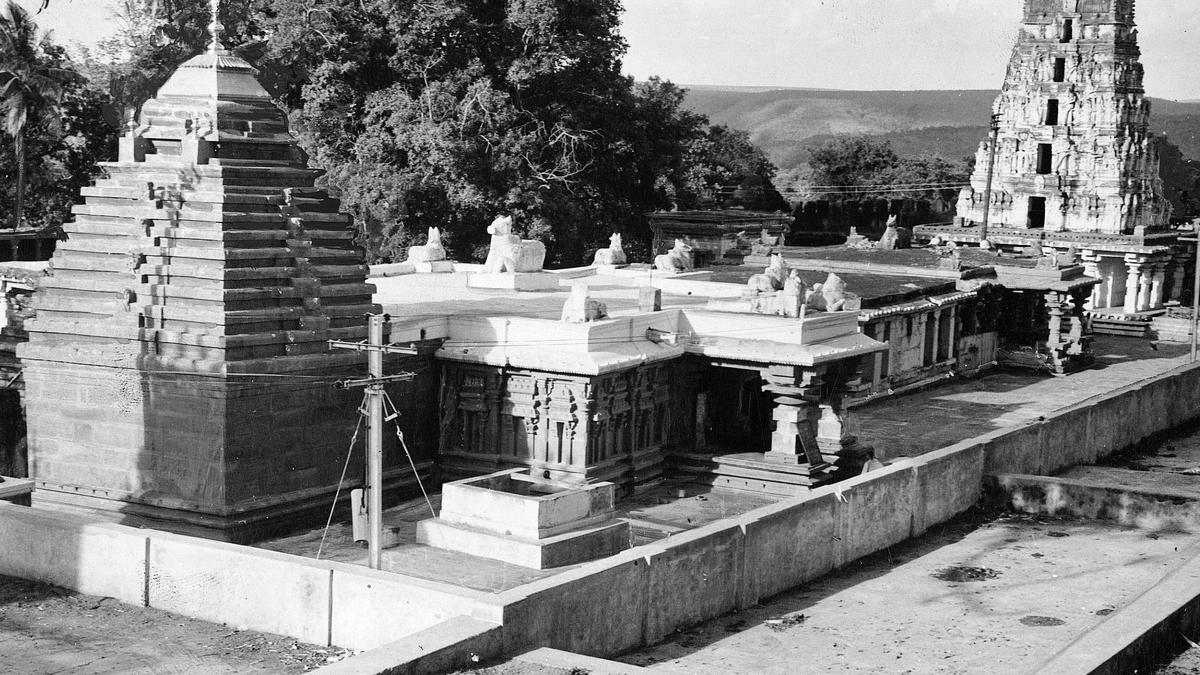Sri Mallikarjunaswamy temple at Srisailam in Andhra Pradesh.
The first Indian epigraphical reference to Halley’s comet has been discovered in a copper plate inscription dated 1456 CE belonging to the Vijayanagara period and preserved at the Srisailam Mallikarjunaswamy temple in Andhra Pradesh.
Dr. K. Munirathnam Reddy, Director, Epigraphy Branch of the Archaeological Survey of India (ASI), who announced the discovery, told The Hindu that the inscription is written in Sanskrit, using Nagari script, and refers to the appearance of a comet and a subsequent meteor shower — events that historically coincide with the 1456 appearance of Halley’s comet.
The inscription records a grant made by the Vijayanagara ruler Mallikarjuna to a Vedic scholar on Śaka 1378, Dhātru Āshāḍha ba. 11, corresponding to Monday, June 28, 1456 CE.
The grant was issued ‘in order to mitigate the great calamity believed to arise due to the appearance of a comet (dhūmakētu mahōtpāta śāntyartham), and the associated meteor shower (Prakāśyāya mahōtpāta śāntyartham)’, said Mr. Munirathnam.
The king donated a village named Simgapura, located in Kelajhasima of Hastinavati Vemṭhe, as an agrahāra to a Brahmana named Limgaṇarya, a Vedic scholar from Kaḍiyalapura. Dr. Reddy said this place is probably present-day Kaḍiyapulanka in Galividu mandalam, Cuddapah district of Andhra Pradesh, and noted that the scholar was probably well-versed in astronomy.
Dr. Munirathnam noted that while references to dhumaketus (comets) are found in ancient and medieval Indian texts, this is the first inscriptional record that has been discovered.
“What makes this particularly significant,” he said, “is that the year mentioned in the inscription and the reference to the comet’s appearance matches the year in which Halley’s comet was later established to have appeared,” said Mr.Munirathnam.
He explained that in traditional belief systems and from the available historical records, the appearance of a comet and meteor shower was considered inauspicious, and associated with misfortune and calamities in many parts of the world.
Mr. Reddy said the appearance of the comet and the beliefs surrounding it are vividly expressed in the inscription in the phrase: Prakāśyāya mahōtpāta śāntyartham dattavān vibhuḥ — meaning: this grant was made in order to pacify the calamities that may arise due to the illuminating comets and meteor shower upon the king and his kingdom.
The discovery of reference to comets in the inscription was made during the critical ’line by line’ editing of a set of 21 unpublished copper plate charters held by the Srisailam temple authorities. The collection, comprising 78 copper leaves, will soon be published in book form, he added.
Published – June 20, 2025 10:45 am IST
